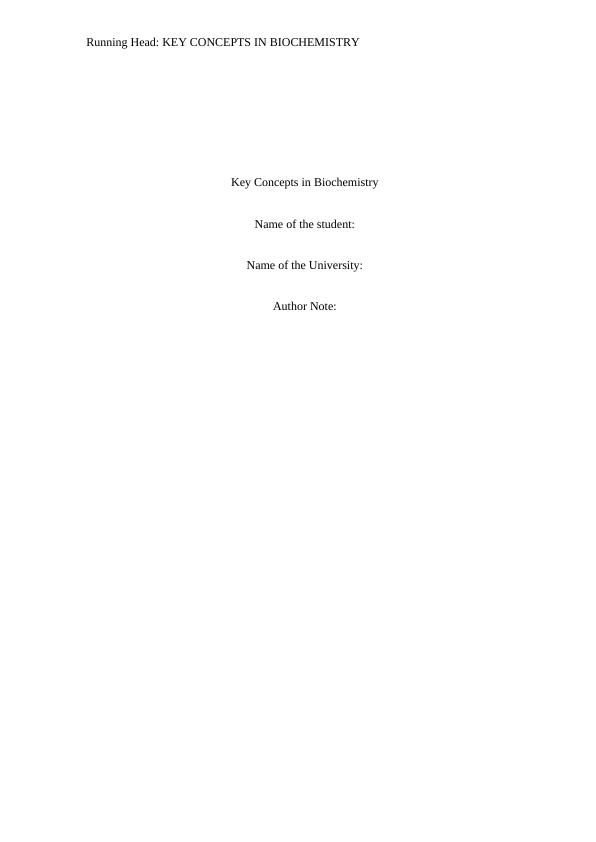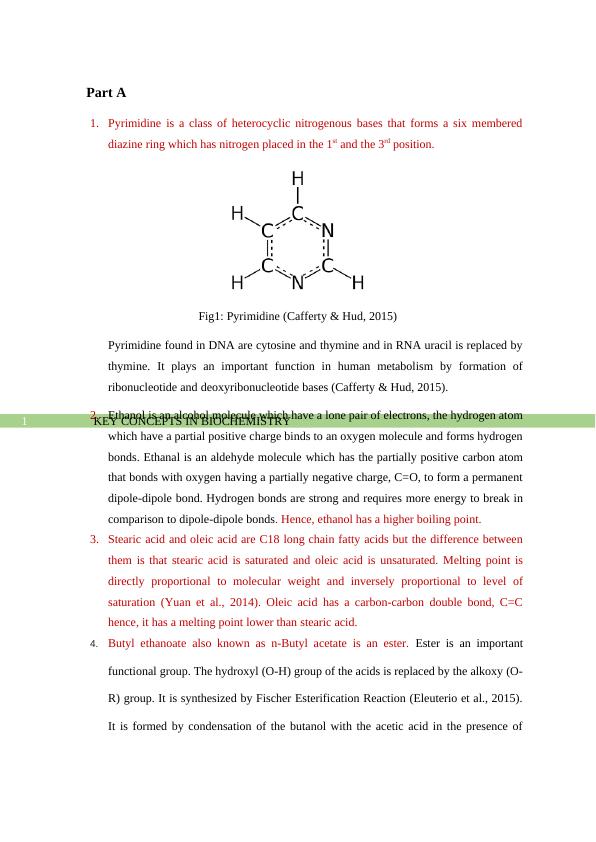Key Concepts in Biochemistry
Develop a report on key concepts in Biochemistry related to health science, demonstrating knowledge, understanding, and research skills.
8 Pages2336 Words378 Views
Added on 2022-11-25
About This Document
This article discusses key concepts in biochemistry including pyrimidine, ethanol, stearic acid, oleic acid, and butyl ethanoate. It also explores the functions of carbohydrates, proteins, and lipids in the cell membrane structure. The role of penicillin in inhibiting bacterial cell wall synthesis is explained. The process of transcription and translation in DNA and RNA is discussed. Additionally, the interrelation of species based on their genome similarity is examined.
Key Concepts in Biochemistry
Develop a report on key concepts in Biochemistry related to health science, demonstrating knowledge, understanding, and research skills.
Added on 2022-11-25
ShareRelated Documents
End of preview
Want to access all the pages? Upload your documents or become a member.
Biology Macromolecules Question Answer 2022
|10
|2079
|23
Surname 18. Name. Professor. Institution. Course. Date.
|23
|3642
|7
Biology Nutrition and Digestion
|5
|829
|121



